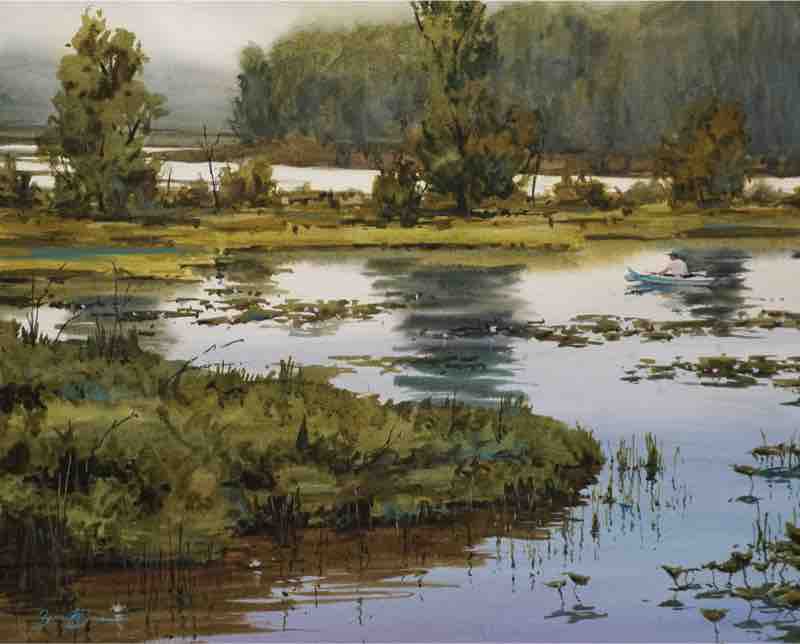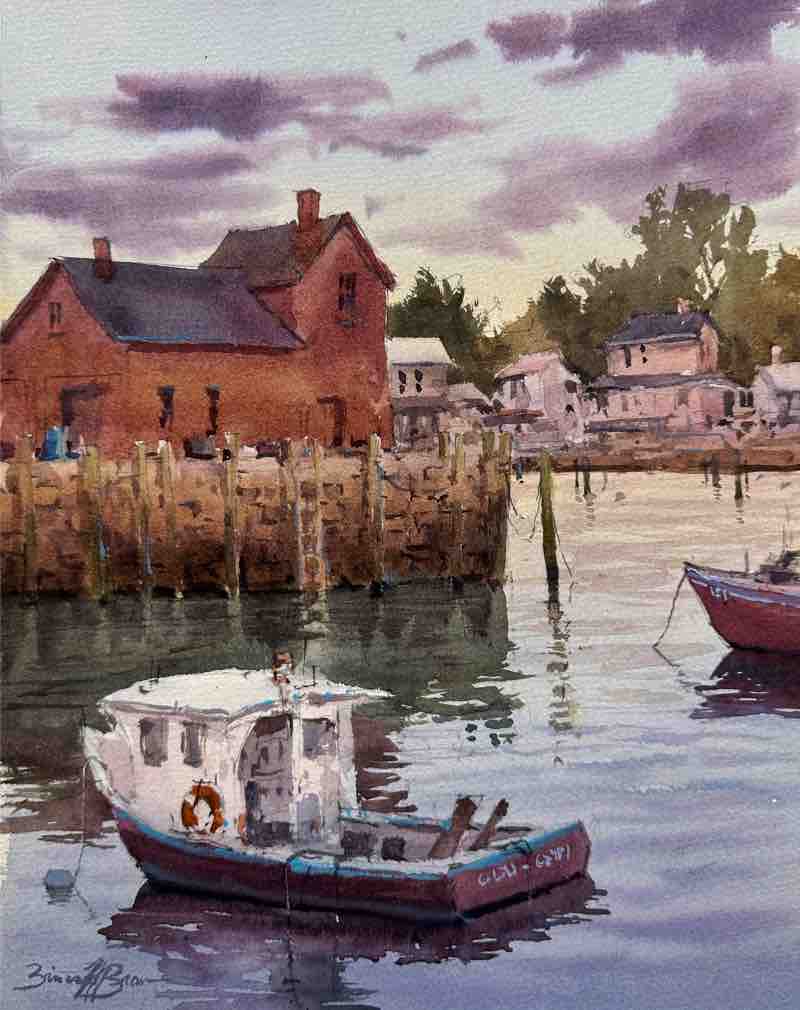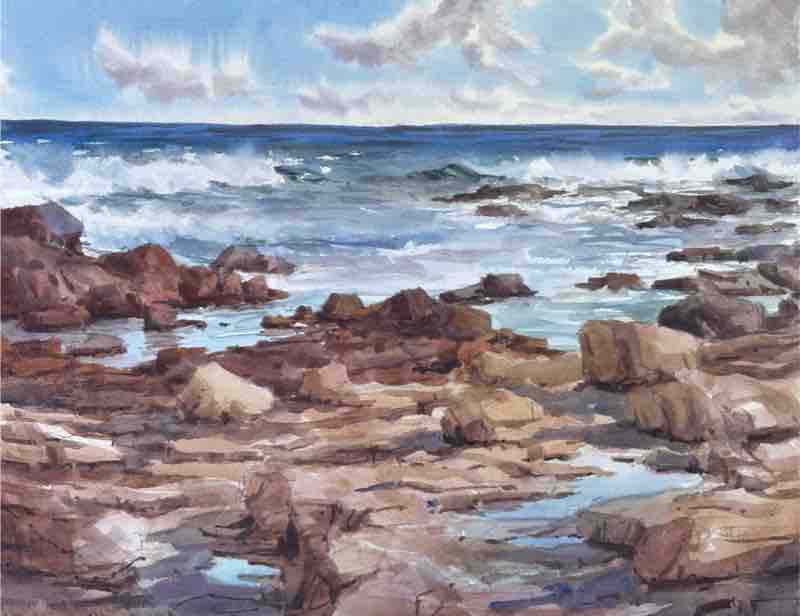
“Living in central Pennsylvania, I’m accustomed to still or softly rippling lakes and rivers,” says Brienne Brown. “They’re rarely the main focus of my compositions, however, as I tend to keep the water simple compared to more complex surrounding shapes, such as land, boats, and trees, in order to maintain balance.
“With large bodies of water there’s a slight gradation in color and value on the surface. Depending on the sky conditions and the depth of the water, they can go from light to dark or dark to light with respect to the foreground and background, an easy gradation to make with watercolor. Working wet-into-wet creates the soft edges that contribute to the look of gentle ripples.

“In general, I don’t like the water to become too highly textured. To create soft reflections in the water, I apply paint wet-into-wet with downward strokes. After the painting is dry, I lift a few horizontal strokes through the reflection shape using a damp, clean brush. To paint hard reflections, I let the first wash dry then paint the reflections using horizontal strokes. I’ll make the reflection more solid the closer it is to the object being reflected, and break it up more the further it gets from the object. I then soften some of the edges with a clean, damp brush.”
WHAT TO DO WHEN THE ATMOSPHERE IS TOO HUMID OR TOO DRY

“The main challenge a watercolor artist faces en plein air is keeping the paper wet enough for long enough to create those soft edges,” says Brown. “If it’s a humid day, you can get wonderful soft edges for a long time, but sometimes the painting won’t dry enough to finish. In those cases, I get into my car and turn on the heater full blast to dry the painting. If it’s a dry day, I use my squirt bottle to keep the paper moist. I also pre-wet my paper before painting so it can remain damp for longer.”







